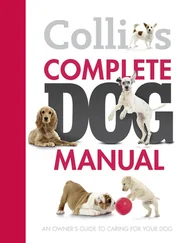As we get older our feet tend to get longer—no, we aren’t still growing, but most people’s arches begin to flatten out and without that curve the feet get longer. So if you haven’t been hiking for a while you might be in trouble if you pull that five-year-old pair of boots out of the closet and expect them to fit like they used to. If it’s been a while, wear them around before your trip and make sure it’s not time to buy a new pair.
BREAKING IN BOOTS
Before you leave the store with your new boots, make sure that you can bring them back if they don’t fit. Most stores are good about this if you only wear them indoors and bring them back in good condition and in a reasonable period of time. Start wearing your boots around the house to be sure you have the right fit. Once you are happy with the fit, you need to break the boots in to your feet. Always break in a pair of new boots well before your trip. Most medium to heavyweight boots will require some use to soften up and conform to your particular feet. Even old boots should get a little break-in if you haven’t worn them for a while. Begin with short walks and gradually increase the time you wear them. Easy day hikes are a good way to break in boots. Each time you lace your boots, take the time to align the tongue and lace them properly; otherwise, the tongue will set into a bad position, which can lead to hot spots and blisters.


TRICKS OF THE TRAIL
Warm Up Those Cold BootsOn a cold night, turn your sleeping bag stuff sack inside out and put your boots inside. Sleep with the stuff sack in your sleeping bag, between your legs. The coated nylon of the stuff sack will keep the wet boots from soaking your sleeping bag, and your body heat will keep the boots warm and help dry them out a bit so you don’t have to face cold or even frozen boots in the morning.
BOOT CARE
Boot care varies with the type of material—leather, synthetic leather, nylon, and combinations of these. If you have all-leather hiking boots, find out what type of leather it is. Oil-tanned leather is usually treated with wax or oil, chrome-tanned leather with silicone wax (a beeswax-silicone mixture is recommended). The primary reason for treating boots is not to completely waterproof them, but to make them water repellent and to nourish the leather to prevent it from drying and cracking. Boots should be treated when they are new and on a regular basis to keep the leather supple.
Wet boots should be air-dried slowly or with low heat (put them in the sun). Don’t try to dry boots quickly (for example, near a fire or a radiator)—different thicknesses of leather dry at different rates, which leads to cracking and curling. I’ve seen boots peel apart from drying too fast near a fire. While walking on the trail, the heat from your foot will help dry the boot. At the end of the day, when you take off your boots, open them up as much as possible to help them dry out. (This will also make them easier to put on in the morning.) You may want to leave your boots upside down at night to prevent dew from forming inside.
When you return from a trip, always clean your boots before you store them, or the dirt will corrode the stitching at the seams. Use a stiff, nonwire brush to remove caked-on dirt. For leather boots, rub them with moistened saddle soap. Wipe off the residue, air-dry them thoroughly, then apply a generous coating of wax or sealer. Store your boots in a cool, dry place to prevent mildew. Boot trees can help maintain the shape of your boot and cedar boot trees can absorb moisture from the inside of the boot, helping it dry slowly.
THE BACKPACK
There are two basic types of packs: external and internal frame. The purpose of the frame is to transfer most of the weight of your gear onto your hips, so the strong muscles in your legs carry the load, rather than your shoulders. If you remember trying to carry loads of books home from school in a day pack, you know what I mean. The ideal distribution is about 70 to 80 percent of the weight on your hips and 20 to 30 percent on your shoulders. This split in weight also lowers your center of gravity, making you more stable. Recent advances in pack design offer an incredible range of sizes and options.

External-Frame Pack

Internal-Frame Pace
External Frame The external-frame pack helped revolutionize back-packing. Suddenly, much larger amounts of weight could be easily and safely carried, allowing for longer trips. External-frame packs typically use a ladderlike frame of aluminum or plastic. The hip belt and shoulder straps are attached to the frame (see diagram below). A separate pack bag attaches to the frame, usually with clevis pins and split rings. Pack bag volumes range from 3,000 to 4,500 cubic inches (49 to 73 liters). There is also space for attaching large items like a sleeping bag to the outside of the frame so the actual carrying capacity of the pack is more than the pack bag volume. Some external-frame packs come in specific sizes based on the length of your spine; others are adjustable to fit a range of sizes. Look for good lumbar padding, a conical hip belt, recurved shoulder straps with good padding, and a chest compression strap. Pro: Good for carrying weight. The external frame allows for some air space between your back and the pack bag so your back doesn’t sweat as much. The weight is carried higher in the pack, allowing for a more upright posture. Frame extension bars and space for a sleeping bag outside of the pack allow you to strap on lots of gear when you need to, making the carrying capacity of the pack more versatile. Less expensive than many internal-frame packs. Con: Since external-frame packs carry the load higher, they raise your center of gravity, making you more “top heavy” and less stable. Most external-frame packs don’t hug your body as well, so the pack tends to wobble from side to side as you walk. This is usually not a problem on a regular backpacking trip, but can throw you off balance if skiing or snowshoeing. Airline baggage-handling machines are notorious for bending frames. Don’t take it on an airplane unless you have boxed it up.
Internal Frame Internal-frame packs use a wide variety of materials—aluminum stays, carbon fiber, plastic sheets, and foam—to create a rigid spine to which the hip belt and shoulder straps are attached (see diagram). The pack bag runs the full height of the pack, although it may be divided into several compartments. Pack volumes range from 3,000 to 7,500 cubic inches (49 to 122 liters). Some internal-frame packs come in specific sizes based on the length of your spine; others are adjustable to fit a range of sizes. As with an external-frame pack, you should look for good lumbar padding, a conical hip belt, recurved shoulder straps with good padding, and a chest compression strap. A removable top pocket and a bivy extension (a fabric layer sewn around the top opening of the pack bag that, when pulled up, adds to the overall pack volume) on the pack bag will let you lift the top pocket and store more gear. Also, make sure that the pack has side compression straps to squeeze the pack down if you are carrying a smaller load. Pro: Good for carrying lots of weight. Conforms to the body for better balance. Generally more comfortable to wear for long periods. Con: Since the pack bag and frame are directly against your entire back, back perspiration can be a problem. Since the weight is carried lower in the pack, you may have to bend over more. You can’t put as much on the outside, so the overall carrying capacity of the pack is somewhat fixed by its internal volume. Tends to be more expensive than external frame packs.
Читать дальше
















